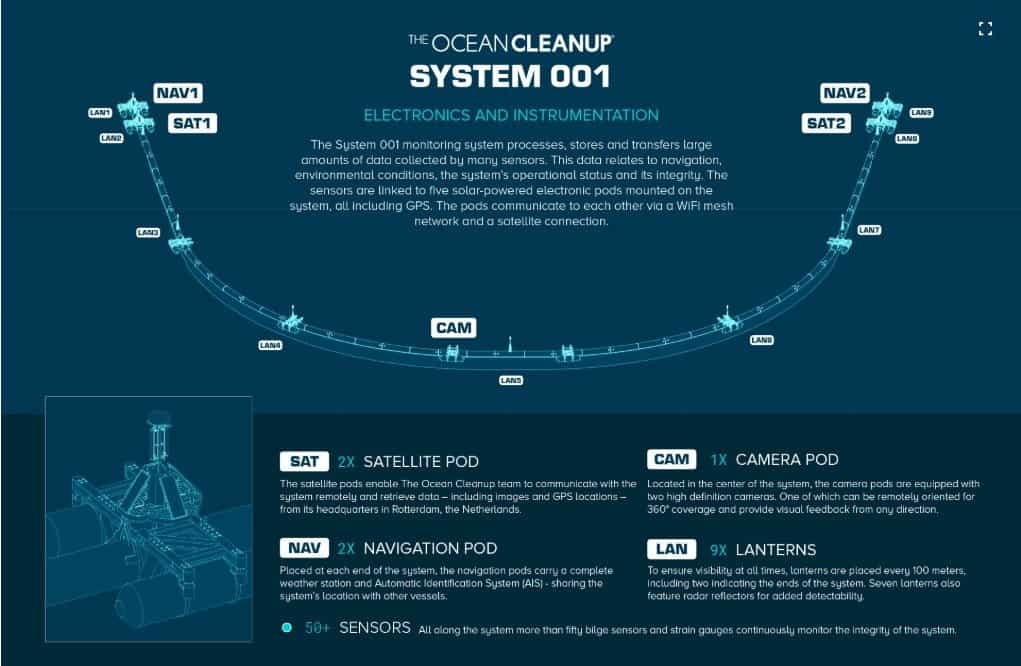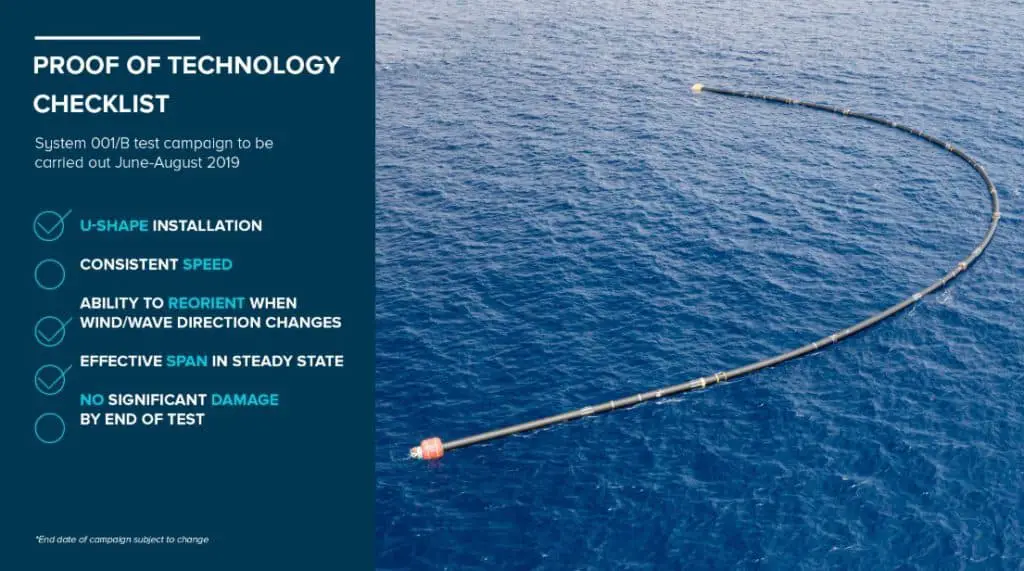Quick Links
Sadly you probably know the story of the turtle with the plastic straw up its nose and the surfer surfing in a wave of plastic. If not, here is the video:
This is always a good reminder of why I do what I do. God, it makes me so sad and angry at the same time. But I know we are all part of the problem, no finger-pointing here. Let’s see what the Ocean Clean Up Project can do to help.
By 2050 there will be more plastic in the sea than fish (by weight). The ocean cleanup project attempts to clean up the mess we have created.
A little bit of background info:
A young boy went snorkeling in Greece to discover that he was snorkeling between plastic pieces and not colorful fish. This got him thinking, and he started to tinker with some systems to clean up the oceans. In 2013 he founded the ocean cleanup project and received 40 million donations and massive media coverage, with big hopes to clean up the oceans.

The now 24-year-old man is Boyan Slat. He invented a passive system that claims to rid the ocean’s plastic by 50% in 5 years. It works solely on wind, waves, and the current and collects the plastic soup in the center of it.
Like a garbage truck at sea, Garbage boats pick up the collected trash and bring it back to land. Once back at the ground, it gets sorted, recycled, and made into other valuable items.
If this gadget works, can we keep making more plastic?
That is the theory behind the ocean cleanup project, but what does the reality look like?
Scientists estimate that roughly 244.000 metric tons of rubbish are floating on the ocean’s surface and another staggering 8.5 billion metric tons on the ocean floor. This trash is getting accumulated in so-called gyres, which are hot spots for the trash. The most famous one is called the great pacific garbage patch and is off the coast of California.
8.5 billion metric tonnes is 8 million elephants, or 80 million blue whales, or 25.000 empire state buildings.
Smithsonian
How does it work?
It is a 600m long floater moving slowly through the ocean gyres, with a skirt that sits 3m deep under it.

Just like the plastic is being carried by the current, so is the System. The big difference is that the System has a floater pushed by the wind and waves, so it moves faster than the plastic, collecting it in the System’s center.
At least, that was the idea. But after the first official launch of System 001, aka Wilson, in October 2018 and after some testing, Wilson had to come back to shore early since the plastic trash drifted out of the System quicker than expected, making it impossible to collect.
The team has been working hard on a new, improved system and building a new one. It is labeled System 001/B.
It only measures 160 m in total length and is supposed to be quicker and more consistent in speed.

The hiccups:
The Team at the Ocean Clean Up needs to find a way to make the big floating device currently being pushed forward by the wind, the ocean current, and waves faster. The first attempt was to open the mouth by 60 – 70 m of the sizeable U-shaped structure to allow more surface area for the wind to latch on and speed up the System. This hasn’t worked properly yet, as the ropes holding the mouth in shape didn’t extend correctly.

Another problem a more extensive span of the System can bring is to pivot or change direction quickly when the wind is changing. Further tests need to be made to fine-tune this project. In the meantime, the team has been collecting Ghost Nets from the ocean.
Isn’t it going to catch a lot of fish as bycatch?
System 001 is moving very slowly through the sea, giving marine life a fair chance to swim away from it. It does not have a net so that nothing can get tangled up in it, and it simply has a big skirt that hangs 3 meters deep into the ocean. This allows fish and other sea creatures to swim underneath it. When it comes to the garbage boat to pick up the trash, people check for marine life and make sure nothing gets taken out of the ocean that belongs to the sea.
What about other boats at sea?
There is no heavy vessel traffic around the Pacific garbage patch. However, if a vessel does pass through the patch, it has built-in measures to ensure the safety of both ship and the cleanup systems.
Each System will be equipped with lanterns, radar reflectors, navigational signals, GPS, and anti-collision beacons. Also, the AIS will constantly broadcast the location of the System. Most noteworthy, since the company’s launch in 2013, funding has reached 31.5 million USD. For a big problem, we need big solutions.
And for those of you that are more visual learners, here is a little clip that tells you what the ocean clean-up project is.
The Ocean Cleanup Project | Update
What are your thoughts on the ocean clean-up project? Can it do what it is claiming?
Perhaps it is for the best if it doesn’t work, and we must take this into our own hands and stop producing more plastic waste. I am curious about what you have to say. Leave me a comment below.
